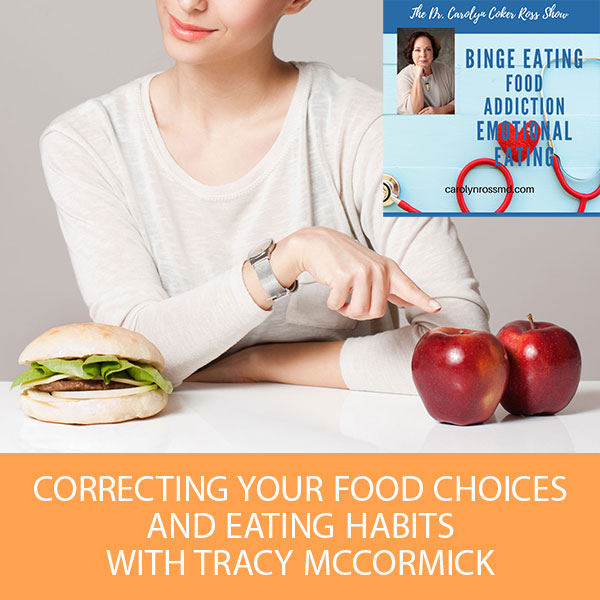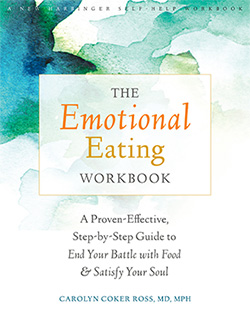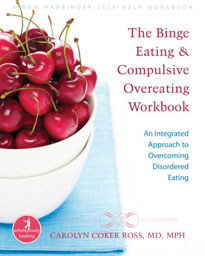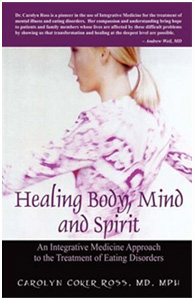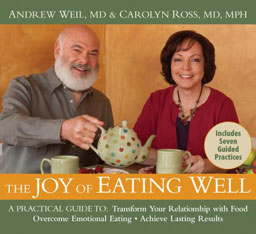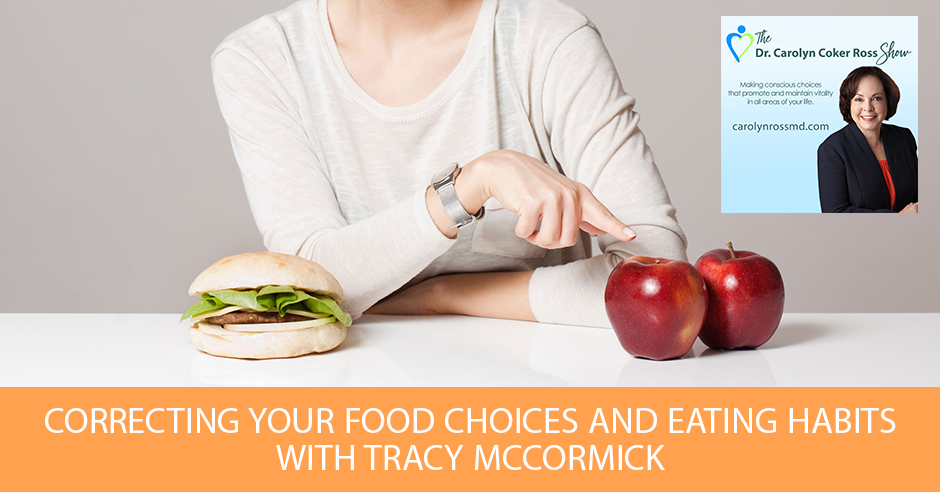
—
Listen to the podcast here:
Correcting Your Food Choices And Eating Habits with Tracy McCormick
My guest is Mee Tracy McCormick. This is her second guest appearance on the show. She is also known as Princess Know It All. Princess Know It All is about wide and expansive living. She encourages women to question what they don’t know. She’s all about choices and acknowledging that we have choices. She helps us by enabling us to see ourselves and the characters that we create to protect our greatest selves. Princess Know It All is about personal ownership from food to beauty. She is inspiring and empowering. Mee Tracy McCormick, who is the alter ego of Princess Know It All, has a book coming out called Cooking from The Inside Out. Mee, welcome to the show again.
How are you, Dr. Ross?
I’m good. When you were on the show last time, we talked about the fact that you had been diagnosed with Crohn’s disease and how that affected your life. Can you give us a little bit about that to get us started?
For about fourteen years, I suffered from severe digestive pain, constant burning and occasional partial bowel obstructions. No one could figure out what it was because I didn’t have typical Crohn’s symptoms. At one point the doctors at Cedars-Sinai thought that it was intestinal cancer. The doctors at Vanderbilt thought it was aggressive Crohn’s. I was about to take a full protocol of pharmaceuticals to try to stop the inflammation and bring it down in the digestive tract. They’d found an ulceration the total circumference of my ileum. As I was about to do that, I asked a question, “What’s in it?” and I wanted to know what was in the drugs. I had a hard time finding that out. What I did find out were the side effects. They were public. I hooked up with a woman who was the head of the SHA Wellness Center in Spain’s Digestive Disorders Program. I learned to cook ancestral foods that support the body. I changed my life and I didn’t know how to cook before I embarked on this journey. Now, I cook every day. I got all my medical tests back and my blood works back and I am absorbing nutrition perfectly and I’m symptom-free.
It’s interesting though that you went against medical advice to do this. That’s in a way in what you’re saying about Princess Know It All that she asks questions about things she doesn’t understand. She doesn’t say, “I’m going to do it.”
It was a turning point in my life because I did just that. I embarked on a journey to find out how capable I was and how resourceful I was.
Did you know that?
I didn’t know that. I had no idea how capable I was. I had no idea that I could empower myself in the way that I did.
One of the things I always say is that illness is a call to action. It’s a call to change your life. Illness is saying that something isn’t working. Was this true for you? If so, what changed in your life?
It showed me how resilient I am. It totally brought a call to action. It changed everything. It changed everything from the way that I parent, from the way that I run my home, from my marriage and my place and my role in my marriage and in my relationship. My role in society is I became someone who created food programs, who went into society to participate. When I say the way it changed the way I parent, it pushed me into holding a line with my family and that line starts in the kitchen. It has tentacles. It started in my kitchen and it spread throughout my life.
In the past women were closely identified with food, cooking and being in the kitchen. That was something that went by the wayside with the women’s empowerment movement or women’s liberation movement. Now, you’re saying that this has been empowering for you to go back to the kitchen.
My mother was divorced in 1978, 1979. She worked full-time and left the kitchen. What happens is when we leave the kitchen, we leave our house. We leave the heart of the home. I do both. I work and I run my kitchen. It’s a choice. Every day I make a choice. When I do, I get up earlier to make sure that there’s supportive food in my house. Do I decide to cut back the activities after school so that I can cook dinner while my kids sit at the countertop? We were told that was a waste of time to be in our kitchen. That there were other things we should be doing. That people who worked in the kitchen definitely weren’t modern women and they definitely weren’t capable. What was created is an entire generation and it’s my generation and below and above me of women who didn’t know what to do with real food. They don’t know how to manage their time in their home. When we’re raising children and we show them that our food is not important. That taking time in our kitchen, running our house and cleaning our house, there’s huge value in taking care of your home and taking care of your space. Whenever I get frantic and super busy outside of my life, the first thing I do is I take a day or a morning if it’s a Saturday or Sunday. It’s old school. It’s what we used to do. I get back in the house, I organize my home and I get in the kitchen with my kids. It’s empowering to them and it’s telling them, “I value my health. I value my home and I value you and your health.”
[bctt tweet=”Illness is a call to action. It’s a call to change your life.” username=”CarolynCRossMD”]I work with a lot of people with eating disorders and obesity. One of the biggest issues that come up is, “I don’t have time to cook,” or, “I don’t know how to cook,” or, “It’s too expensive for me to eat more vegetables or to eat more healthily.” I know in some of the work that you’ve done with the Noble Food Makeover, you’ve been able to show people that it isn’t too expensive and it isn’t too time-consuming.
The thing is that if you’re cooking simple foods, real foods, ancestral foods, whole foods are simple. They need to be prepared in simple ways for our body to receive the nutrition. When we put complicated foods into our body, it’s difficult for the body to sort it out. Simple foods are super easy to cook and they’re remarkably inexpensive. For the Noble Food Makeover, I cook for 40 people for $40. Nothing is out of a can, a box or a jar. A lot of the food I cook is local and organic. It’s about education. It’s about learning how to cook millet and how to cook quinoa? A pound of millet is $0.99. A pound of millet will feed your family for a week. The benefit of it is it’s not a carbohydrate. It’s a seed and a protein. It cooks down like a grain. It’s put in the grain family but it doesn’t feed on healthy bacteria and it’s not a carbohydrate. It’s good for diabetics. It’s good for stomach acid. It’s great for people with fibromyalgia. These simple foods for $0.99 have these amazing benefits. Three-quarters of the world live on millet except for us. The only part of our culture that lives on millet are cows and zebras.
We live on gluten or wheat, which is causing a lot of problems.
The keyword is we live on it.
We don’t live very well on it is more of the key. I’d like to talk a little bit about some of the examples that you can give about how your diet has changed. I know many people eat from fast food restaurants. I’ve had patients who say they don’t eat anything that doesn’t come in a bag or a box. What are some of the steps that you teach people to shift from what I call the fast food generation to eating more fresh, naked or eating closer to the ancestral diet?
The first thing that I tell people is to start being mindful. Start paying attention to what you’re eating. First thing is to pay attention to your hand and mouth and what’s going in the mouth. Is it a lot of wheat products? Is it a lot of dry, crunchy products? That absorbs water in the digestive tract. How often are you eating vegetables? What type of vegetables? The first thing I say is to be mindful. The next thing that I talk about is trying to cut back on the gluten. Pay attention. The more mindful you become of your relationship with food, the easier it is to make changes. The first thing is mindfulness. The second thing is paying attention to the sugar, the wheat and the dairy. How much of that is going into your body? What I do is instead of completely removing things from the diet, I like to introduce new things to the table. I’ll introduce cooking with millet, making soups or adding sea vegetables. It’s not like, “I have to stop all this stuff.” Introduce one thing. If you’re cooking for a family I’ll say, “Let’s introduce this this week. Try this this week,” and put it on the table. It’s not about going to battle with your family to do this major overhaul. It’s being consistent. Every week you’re adding something to the dinner table. When you add that, you might remove something else. Learn to make one thing that’s not processed. One side item on that table is completely unprocessed and a whole food.
We were talking about introducing new foods into the family and how you don’t say, “Don’t eat this,” you say, “Try this,” which is brilliant. I wanted to talk about how you handled any resistance that came up in your family, whether it is with your husband or with kids to changing the diet.
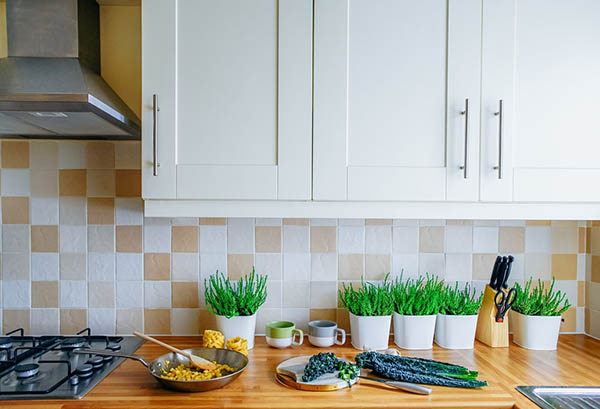
Food Choices: When we leave the kitchen, we leave the heart of the home.
The greatest thing that I’ve learned is to be the mirror. Be the grace in your family. That has tentacles into everything. When I first embarked on this food journey, I learned that I could eat this food and it didn’t have pain. It was something I had to do. I also knew it was something I needed to implement for my family because there I was eating this beautiful meal and I was making them boxed macaroni and cheese. What’s wrong with this? There’s no nutrition in what they’re eating and here I am eating the new gourmet is what this food is. Real food is the new gourmet. Simple, clean food is the new gourmet and I thought, “If we were in a restaurant, that would be child abuse.” It’s like giving them a bowl of water and then I’m having a full steak dinner. What I did is I decided, “I have to be the person. I have to eat it. I have to embark on this journey,” and then I introduced it gradually. I would say, “We’re having brown rice and adzuki beans. We’re having broccoli.” I would pick a vegetable that they already liked first of all and then I knew one thing on the plate they like. I would give them a small serving. I don’t make it an issue. I still am introducing new things and I’ll say, “Here you go. I need you to take a few bites of this. Try it.” They would say, “Go make me chicken nuggets. I want a pizza.” The work was with me. I had to stop buying it in the market because if it was in the freezer then they were going to nag me. I was already worn out from the day and I was going to go make them the chicken nuggets.
It starts with being a parent. I know that those aren’t healthy things for my kids to eat. I can’t have them to default. They can’t be in the freezer so I stopped buying them. That was an interesting process because I knew I couldn’t eat it, but there I wanted to buy them the cookies. That was the first thing. It’s not in the house, so they know it’s not in the house. It was the fallback, “I’ll have a bowl of cereal.” It took me learning to hold a line with my children and saying, “This is what we’re having for dinner. This is what I’m cooking. I’m cooking one meal and you’re welcome to eat it or you don’t have to eat it. You can sit at the table and finish the conversation with us and the plate will be here if you want it later, but you can’t have cereal later.” It’s simple, old-school parenting. It’s old-school food and old-school parenting without a fight. There’s no anger. There’s no animosity. I have to pay attention to the energy and the way that I deliver the food. Lola, she would not eat the seaweed and the miso soup. I never made a big deal of it. I gave her the broth in a little cup and I’d say, “Drink this.” Now, she eats a whole bowl of it. She didn’t like peas, so I kept putting the peas in things. She picked them out. Now, she likes the peas.
In America, starving to death from not eating peas is unlikely, at least with most of the people who are reading our blog and most of the people we know. Hunger is something that can teach children, but many parents are afraid to not give them the cereal because, “They’re hungry.”
It’s old-school parenting. It’s about you holding a line with your children when they’re little. They don’t have an ATM card. They don’t have the car keys and a car to drive to the market and buy the food. It’s my house. I make the decisions in the kitchen. I’ve found that it’s super important because when I go out into the world with the kids. They go to birthday parties, someone’s house or they’re at the park, it’s difficult to control the food so I don’t. I relax. We’re at your house and that’s what you cook. I know that it’s my responsibility to hold the line in my kitchen and in my home. I tell them that. I said, “You’re fortunate to have kale. A lot of children don’t have kale,” and that brings you to food desert conversations and it’s true. That brings us to the class divide, which is at the table of what’s being served in what homes. It doesn’t have anything to do with money. It has everything to do with education.
We’ve had shows on TV here in Denver that people have challenged themselves to eat healthy on food stamps. It’s hard to do. It’s no doubt that it’s a lot harder than driving through McDonald’s and getting a Big Mac, but it’s also healthier. We don’t even have Home Economics in school anymore to teach people how to eat or cook.
We don’t. People don’t even know what it is. There’s this argument that I have with that. If you go to McDonald’s and you’re a family of four, the meal is $6 so that’s $24. That $24 is gone within a half hour. If you have $24, you go to the grocery store and you know how to cook beans. You know how to make rice. You know how to cook vegetables and you can make a pot of soup. You’ll have food in your house for two days at least. It’s the education of it. It’s quicker to go spend that $24 at McDonald’s, but it’s not healthier and it’s not resourceful. We have a home in Mexico City and I had this huge light bulb go off when I was in Mexico City. There are 24 million people there. 23.9 million of them are way below the poverty level, beyond poverty in this country. Yet they still find a way to grow their own food, use fresh herbs, cook beans and eat rice. Infants in Latin America are fed the broth of black beans because of the iron and the magnesium. It disputes the poverty issue around food. It’s a choice issue. It’s a value issue. It’s a question of value and choice. In third world countries, if you go to Africa, they’ll drop bags of grains in sub-Saharan Africa. They eat grains. We have obese people but they seem to be malnourished.
[bctt tweet=”The more mindful you become of your relationship with food, the easier it is to make changes.” username=”CarolynCRossMD”]The studies have shown that being overweight doesn’t mean being overnourished, just the opposite. Let’s talk about how Princess Know It All fits in with your journey to healing from Crohn’s and the changes you’ve made in your eating habits?
I realized that the choice around food, it wasn’t about food. It was about my entire life. It was about what I don’t know about me. Princess Know It All is tongue-in-cheek for what I don’t know. That is about what I didn’t understand about myself, about my emotions, about the masks and the characters that I’ve created. It’s about what I didn’t know beauty-wise, fashion-wise. I have been a magazine writer. I decided to take all the columns that I write for other people and create my own website with all of these different factors, a full lifestyle. Princess Know It All is a place for me to express all the ways that I’m learning constantly and to inspire women to ask questions. Inspire them to look at themselves. Getting well from a digestive disease or any disease isn’t the food, it isn’t the medication and it isn’t the emotional work. It’s a combination. It’s deciding who you want to be and becoming it. That’s our willpower.
Did you have any fear about going in these new directions?
I had a lot of fear. When I embarked on the food journey, “I’ll do it for a year,” and I’ll know that if I do it. That’s the thing. People say, “I tried it. I have fibromyalgia and I tried the diet and it didn’t work.” How long did you try it for? How committed to it where you? They’ll say, “I have colitis. I tried this and it didn’t work.” It wasn’t a three-month journey. I’m still in it and I’m still going through things. I’m still getting well and it’s a process. We’re accustomed to, it goes into our convenience food, but we want convenience healing. We want a quick fix. It’s a process and it’s been a fantastic journey. I finished writing my book and putting it out there and that’s a scary thing. Writing from an honest place and living from an honest place can be frightening because we’re taught to mask things.
What were some of the fears that you had to overcome?
First of all, writing about who I am and how I see things. Big judgment, first self-judgment and then the exterior judgment. As I whittle away at self-judgment because it’s an ongoing process. It’s like patience, you constantly have to work at it. The exterior judgment becomes less and less important. It becomes none of my business. The food thing was tough because as I did it, people said, “You’re crazy. You’ve lost 25 pounds. Why are you doing this? Why don’t you go take the drugs?” It’s not that I’m against drugs. We’re fortunate to live in a country where we have access to pharmaceuticals. It’s how are you helping yourself and how are you working with your doctor? When you go to your doctor, say to him, “What can I do?” If he doesn’t have anything for you to do, find out what you can do on your own and take the action. Standing up to people and saying, “I’m going to do it this way and I’m going to do my best,” that’s the fear. The fear of dying, we’re completely terrified of dying. We’re worn out with the fear of getting sick, yet we’re not doing anything to be proactive in our health and preventative. There’s a lot of fear.

Food Choices: Hunger is something that can teach children.
I asked you that question because I’ve had my own healing journey. I remember so much fear in going against or not following the party line, especially being a medical doctor. Having people say, “Take this drug,” or, “Take that drug,” or, “Get surgery or whatever.” There’s a lot of fear that you don’t know enough or that you’re going to make the wrong choice and that it’s going to cost you or that you’re going to die. We all address that fear or we need to address that fear. Whether we’re successful in addressing it defines our journey. Mee, can you tell us about a couple of the Princess Know It All characters and how they came about?
The characters are aspects of my personality that in truth I created to function in society. There’s the little mask that we develop probably around the age of three and we continue to develop them. Even though I have awareness around them, I’m still creating them. My character is Hi, I Can Do It All. She is the one who never says no. Instead of asking for help, she goes ahead and does it all. She wears herself out. In a relationship with people, resentment is developed. That’s not healthy. She’s not so healthy. The other characters that I have a little bit of are Hi I’m Too Much. It’s a little over the top and I want to say it. I want to go right there and I’m too much.
How do people react to that one?
It depends who they are.
I always liked that part of you.
I like her too. The thing about these characters is that they’re not always bad. They all have a place in time and especially when we’re living from the choice to see ourselves. When you recognize where you’re coming from, isn’t that funny? We have to recognize where we’re coming from in a situation. When I can see where I’m coming from, then I usually embrace these characters and I use them wisely. When I’m not being conscious, I’m not paying attention to the situation and I’m not clear in my day, then the characters are the ones driving the bus. When Hi I’m Too Much is too much, it’s usually because she’s in reaction to a situation. There’s always the counter side of her which is Hi I’m Not Enough. She’s the self-judgment of Hi I’m Too Much. Who else is in there? Is It Going To Hurt?
What’s that one?
“I don’t want any confrontation. I don’t want to go to the doctor. Is It Going To Hurt, she’s avoidance. She’s fear-driven and shaking in the knees. There’s the opposite of her, which is the bullfighter. She is, “I am the bullfighter.” She’s Hi I’m Offended. She’s so offended, she walks around with that red cape, flagging it and everybody’s the bull. She’s sensitive and touchy and she’s got issues. Every once in a while I’m the bullfighter and you can ask my husband.
[bctt tweet=”Serving the right food at the table is not all about money; it’s all about education.” username=”CarolynCRossMD”]Who is he in that place when you’re the bullfighter?
He’s my petty tyrant or my pet demon. It depends on how you look at it. My favorite is Hi I’m Fine Without You.
That’s a favorite of mine, too. I haven’t told you that I started going on the dating websites again. I’m being matched with all of these truck drivers. Nothing against truck drivers, I don’t want to say anything politically incorrect against truck drivers. That’s not my type of guy. I’ve been wallowing in, “I don’t need a guy.”
You’re Hi I’m Fine Without You?
Yes, I’m Hi I’m Fine Without You. I don’t need a man.
The other character’s Please Don’t Make Me Connect. Hi, I’m Fine Without You runs into Please Don’t Make Me Connect. It’s like, “Do I have to go there? I’m going to have to sever it at the head.” The lesson of Hi I’m Fine Without You is I learned to don’t sever things at the head, because then they can’t grow back. Ease back out. Be as honest as possible and give things space. That’s the opposite. That’s the healthy approach to Hi I’m Fine Without You.
Hi, I’m fine Without You when she severs it at the head is when she says those things. The thing you’re talking about.
If you sever it at the head, it’s like you go all the way there with the machete. Sometimes we don’t have to. If we can be mindful of our reactions and step away from situations, then there’s room for things to grow back and for friendships to develop and to come back. It’s like an orchid. You cut the stem and then there’s room for it to come back, but if you drown the orchid the orchid is never coming back.
I have some work that I do with some of my patients who tend to lash out because they get upset. They take things personally and they get upset about someone not doing something the way they want it done. They lash out in a harsh way that’s hurtful and then are surprised that, “People don’t want to be with me.” Is that an example of cutting off the head?
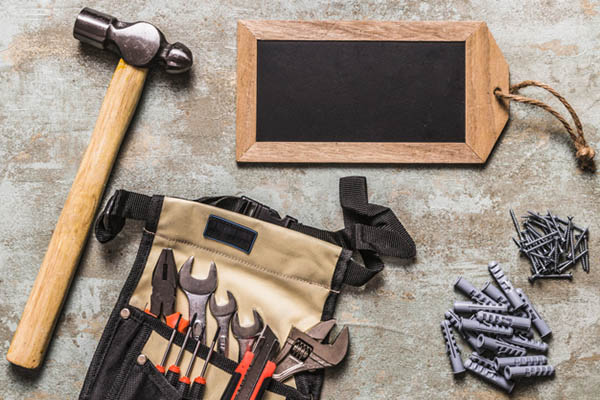
Food Choices: We want the quick fix for everything in America.
You can’t pour acid on a plant and expect the plant to bear fruit. That’s the mindfulness. All these characters can affect us all the way. They are tentacles through our life, our relationships, our parenting, our work, our friendships and our food choices. When I embarked on this diet, I have characters that come up. Is it going to hurt? Please don’t make me connect when I don’t want to get in the kitchen. They all have different sides, different aspects and ways that they interact with the world.
Unless people think that you did this diet and it was so easy for you to do and all of that. I remember you talking about being in the car and wanting to go to Wendy’s so bad. Even your daughter said, “Please don’t go, mom. You know you’re not supposed to go,” and you still do. Do you remember that?
The thing is that it was super hard. First of all, I got a D minus in Home Ec. Good thing that I got rid of that class because I couldn’t do it. I did not know how to cook at all. Now look, I cook on TV. I’ve written books. I’m teaching people all over the country. I did not know how to cook. I could not follow a recipe. Something about a recipe pissed me off. Immediately, when it was in front of me I started to panic and I’m like, “What do they mean by a half a cup? What does that mean I got to hydrate the seaweed? That’s a word I don’t know.” I’ve never seen a seaweed. It was difficult for me. I still crave Wendy’s Single With Cheese. What I do is I make a grass-fed burger at home. I load it with tons of veggies that I grate into it. I add a little quinoa as filler and I cover my plate with three-quarters greens because that’s how you eat meat.
[bctt tweet=”Being overweight doesn’t mean being over-nourished.” username=”CarolynCRossMD”]It’s important though for people to recognize that they can still eat food that tastes good. It doesn’t have to be junk food because that’s a big misconception. The audio program that I did with Andrew Weil is called The Joy Of Eating Well. It’s about the fact that if you eat the foods that please you, then you will feel satiated. You will feel satisfied.
You got to cook. You’ve got to use spices and flavors. What happened is in the ‘70s, ‘80s or ‘60s whenever the big health food movement kicked in, it scared us all to the bejesus. That food tastes like wood. We were like, “We can’t eat that. Don’t do that to me.” When I thought I had to eat real food, I thought I had to eat wood or food that tasted like grass. It’s not true. It’s removing the additives, the preservatives, the sulfites and all of these things that are in the food. It’s monitoring the dairy. For me, I don’t use it at all because I can’t digest it. It’s being mindful of what you’re putting in your body and did it come from its original source?
The other thing that people don’t recognize is you have to educate your palate too. If you’re used to eating foods that are salty and greasy, it takes a while for your palate to change. In my weight program, I had a patient who came to me one day and said, “I’m pissed off at you, Dr. Ross,” and I was like, “Why?” She said, “I’m craving vegetables.”
We have to get our palate all the way down below where it doesn’t want to go. I didn’t know that either. The thing is that we think we’re giving up so much, but we’re not. I only ate five different types of foods. Potatoes, burgers, spaghetti, occasional salad with my vegetable, no wonder I got sick. Put some cheese on it. Put some butter in it. Chicken. Those are the five things or six things that the average American person eats. They only eat the five things in different variations. Changing my diet expanded it. Now, I eat a plethora of food. Foods I’ve never had before. I can taste things. It was Halloween and my girls went trick or treating. They came into the house with a Reese’s Big Cup and I popped five digestive enzymes. Digestive enzymes help you digest your food. They’re like a vitamin that breaks the food down. It helps to break it down in the stomach. When it goes into the small intestine you can absorb. I take them with my meals. I put five digestive enzymes to eat one Reese’s Cup. The first bite was like, “I remember. There you are.” By the third bite, there was no peanut butter in there. That wasn’t real cacao. Where was the cacao? Now, I use cacao which is the origin of cocoa in my food. I didn’t like it. Lee walked by me and he said, “Mee, how many enzymes did you take?” I didn’t like it at all. That’s disgusting. What is that all about?
You mentioned a digestive enzyme, which is something that I recommend to my patients and is in my recovery support pack formula. You have a special one you use that’s made by Enzymedica called Gastro. Is that available at health food stores?
You can get it at any health food stores. Whole Foods is where I get it. It’s a tiny capsule so it’s easy to swallow. You want to take it before you eat, depending on how much you’re going to eat. If you’re going to drink alcohol, you want to take an extra. I’ve tried all of them, different kinds of them. This one is fantastic. It’s great for grains and raw veggies.

Food Choices: You can’t pour acid on a plant and expect it to bear fruit.
I wanted to ask you because Thanksgiving is coming up. I wanted to know what Thanksgiving looks like in a healthy eating house.
It’s easy. I make real sweet potatoes and I puree them. I add a little ghee which is clarified butter. It’s been known to help heal digestive alterations. When it’s clarified, it removes the allergy to dairy. It cooks it down and then you don’t have that reaction. That’s all I add. I might add a little brown rice syrup if I want to make it desserty, but I puree it. I will make an organic turkey for my family and I’ll make it traditional style, but I won’t put butter on it. We’ll have a big pot of collard greens with garlic and olive oil. Possibly, I will have mashed potatoes. I might put a little ghee in them.
For mashed potatoes, you could also add coconut milk or coconut cream.
You totally can, it changes the flavor though. It has a coconut essence to it. Salt and pepper, the collard greens, the turkey and I’ll make something called apple kuzu dessert, which are apples and the kuzu root with ground flax seed on top. It’s a cobbler and the flaxseed makes it sound not good, but it does. It makes it taste crunchy.
It is amazing. I can testify to that. That’s one of my favorites.
Just like apple pie with this kuzu root that strengthens the digestive tract and boosts the immune system. All the food that I cook, I’m always thinking. It’s changing the way we look at food. For the last twenty years, we’ve been looking at food from a vanity point of view, “What is it going to make me look like?” We stopped thinking about food, “What is it going to make me feel like?” If we look at food from, “What is it going to do in my body?” then we don’t have to worry about the vanity because it’s going to have a job and it’s going to clear your skin. You’re not going to have weight gain. Your blood is going to be balanced and supported. Your hormones are balanced and supported. Your vision is clear. Your emotional vision is clear. Now we have to look at, “What is it going to do for my body?” as opposed to, “How is it going to make me look on the outside?”
That’s something I do in my weight management program that I am passionate about. We shouldn’t be focused on food or not eating just so we can lose weight, but it should be about health. “Health first then weight.” That’s my motto.
If we’re eating in nature, we’re eating ancestrally, if we’re eating with the rhythm of our body and our food source, there is no weight gain. It’s some part of it. It’s not even a conversation.
[bctt tweet=”You can still eat delicious foods and be healthy at the same time.” username=”CarolynCRossMD”]You’ve mentioned a number of healing foods. You introduced me to the seaweed. My eleven-year-old granddaughter can eat a whole box of that seaweed snack. It’s like crunchy seaweed. The first bite is fishy, but after that it’s addictive.
The shrimp chip. The first you’re like, “Is that shrimp? Is that beach?”
The other thing is the umeboshi plum vinegar, which I put on a lot of foods now. Tell us a little bit about some of the healing foods.
The benefit of the sea vegetables, seaweed, seaweed snacks, toasted nori, getting sushi, putting seaweed in your vegetables, soups and everything. Seaweed is packed with selenium and selenium is a major immune booster. It’s also got iodine in it. We need iodine. We are lacking iodine. Iodine is a natural antifungal. Iodine also helps women with fibrocystic breasts. There are a lot of links to increase the iodine if you have this going on. It helps balance the estrogen support. It’s said not to diminish the thyroid issue. It’s got magnesium and calcium. Sea vegetables, adding them to your food and to your diet are the most important thing you can do. The umeboshi plum vinegar is so good. It’s a pH balancer. It cuts the acid in your body, so you want to get it into your body. I love to pour it on greens. I like it on corn on the cob mixed with sesame oil. We invented that. You can put it on salad. You can ferment pickles with it. You can sprinkle it on your grains. You can put it on your beans. You can steam vegetables. I love it on top of cauliflower. All this food is looking at how can I cut the acid in my body and balance my pH? You’re the doctor. The more balanced our pH or our inner system is, it’s like a pond of water. If the pH is balanced, there are no bacteria and viruses in it. A stagnant bowl of water, a pond of water or a stagnant body full of water and blood is where viruses and bacteria can thrive.
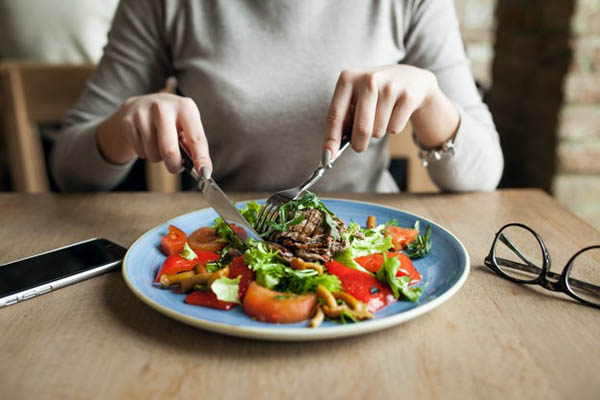
Food Choices: We shouldn’t be focused on not eating just so we can lose weight; it should be about health.
You’re channeling your Dr. Princess Know It All right now.
You’re my doctor. You’ve empowered me in this way. We don’t have to be a doctor to learn things like this and just add things to our food.
The important thing that you’re teaching is being more adventurous with food. I have a club I work with my eating disorder patients called Adopt A Vegetable Club. I encourage them once a week to try a new vegetable and try a new recipe. You’ve moved from Nashville, which has been heartbreaking for me because I don’t get to go to your house for dinner every month. You’ve moved to Malibu and I wondered what adventures await Princess Know It All or what adventures has she been having in California?
Our main home is in Nashville. Our cattle ranch is there. Our biodynamic organic farm is still there. I go back once a month for the Noble Food Makeover. I’m cooking on a morning show in Nashville when I’m in town. We came to Malibu to launch my book, Queen of The Double Wide. I am in development to create something for television.
If anybody wants to know more about Princess Know It All, go to her website and check out her blog at www.PrincessKnowItAll.com. Your book is coming out soon. That’s Queen of The Double Wide. What about the cookbook, Cooking from The Inside Out?
The first book is Queen of The Double Wide and it’s a memoir. The end is recipes. The final chapter is recipes. As I talk about my process, I mention recipes and then they’re all in the back. That’s a get me started book. It’s a memoir with recipes. The second book is the cookbook. Hopefully, you’ll be able to pick up my book. I’ll be launching the full-on cookbook after that.
Thank you, Mee, for being on the show. Thanks to all of our audience. The subject of the next episode is men with eating disorders. The Founder of the National Association for Males with Eating Disorder, Chris Clark, will be on the show and talk about his experience with anorexia. Ron Saxen, who is the author of the book The Good Eater, will also talk about his experience with an eating disorder and about his book. Until then, I wish you good health and vitality.
Important Links:
- Mee Tracy McCormick
- Princess Know It All – Facebook
- The Joy Of Eating Well
- Gastro
- www.PrincessKnowItAll.com
- The Good Eater
About Tracy McCormick
 Mee Tracy McCormick is a Real Food and Autoimmune Cooking Expert, a Community Food Advocate and the author of My Kitchen Cure: How I cooked My Way Out of Chronic Autoimmune Disease and Prevented Cancer with Whole Foods and Healing Recipes.
Mee Tracy McCormick is a Real Food and Autoimmune Cooking Expert, a Community Food Advocate and the author of My Kitchen Cure: How I cooked My Way Out of Chronic Autoimmune Disease and Prevented Cancer with Whole Foods and Healing Recipes.

